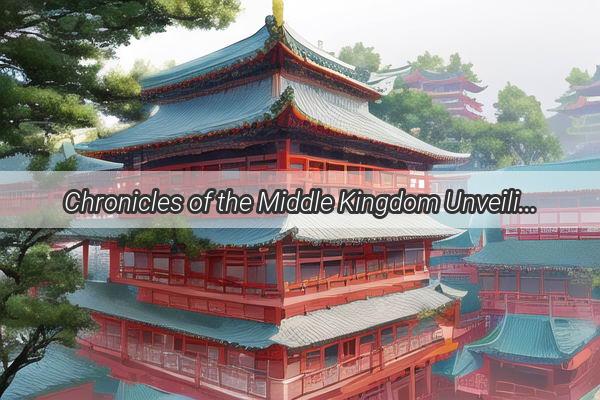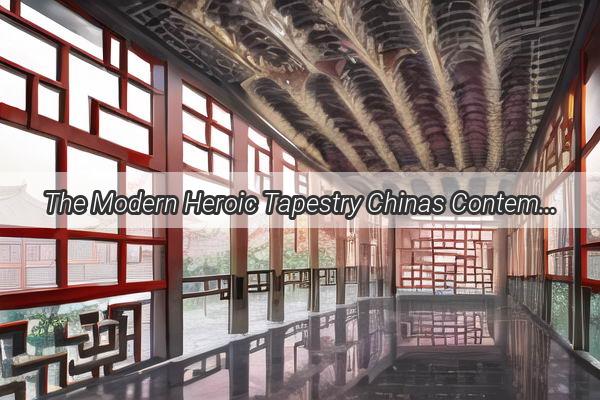Chronicles of the Middle Kingdom Unveiling the Rich Tapestry of Chinese History Through Disciplinary Crossroads
---
Chronicles of the Middle Kingdom: Unveiling the Rich Tapestry of Chinese History Through Disciplinary Crossroads
In the vast expanse of human knowledge, the study of history often takes on multiple hues and facets, each reflecting a unique lens through which we perceive the past. The discipline of history itself is not static; it evolves, adapts, and intertwines with other fields, creating a fascinating tapestry of interdisciplinary inquiry. One such crossroads where the threads of history weave together particularly richly is the study of Chinese history, particularly through the lens of discipline history. This article embarks on an exhilarating journey through the annals of the Middle Kingdom, exploring how the intersection of various academic disciplines has illuminated the complexities of Chinese history.
The Art of Historiography: A Chinese Perspective
At the heart of understanding Chinese history lies the art of historiography, the practice of writing and interpreting history. For centuries, Chinese historians have grappled with the task of recording and analyzing the past, often influenced by philosophical, literary, and even political currents of their times. This unique approach has given rise to a rich body of historical texts that, when studied through the lens of discipline history, reveal a wealth of insights.
For instance, the Records of the Grand Historian by Sima Qian, often hailed as the first comprehensive history of China, is not merely a chronicle of events but a testament to the philosophical and cultural underpinnings of ancient Chinese society. By examining the way Sima Qian incorporated Confucian, Legalist, and Taoist thought into his narrative, scholars can discern the intellectual landscape of the time and how these ideologies shaped the Chinese historical consciousness.
Interdisciplinary Dialogues: A Meeting of Minds
The intersection of Chinese history with other disciplines has been a fertile ground for scholarly exploration. Archaeology, for example, has unearthed countless artifacts and remains that have shed light on ancient Chinese life, politics, and culture. The discovery of the Terracotta Army, the remains of the Han Dynasty, and the ruins of the Great Wall of China are just a few examples of how archaeological finds have complemented and enriched our understanding of Chinese history.
Cultural studies also play a crucial role in interpreting Chinese history. By examining the arts, literature, and folklore, scholars gain a deeper appreciation of the values, beliefs, and social structures that have shaped Chinese civilization. The intricate paintings of the Tang Dynasty, the intricate calligraphy of the Song, and the vibrant folk tales of the Chinese countryside all offer glimpses into the soul of the Chinese people.

Technology and the Digital Age: New Frontiers in Chinese History
The advent of technology has opened new frontiers in the study of Chinese history. Digital archives, databases, and simulations allow historians to analyze vast amounts of data, visualize historical events, and reconstruct the past in ways that were once unimaginable. This digital revolution has democratized access to historical resources and has made the study of Chinese history more inclusive and engaging.
For instance, the Chinese Historical GIS Project, an online database that maps historical events and places, enables scholars and enthusiasts to explore the spatial dimensions of Chinese history. This tool not only aids in understanding the political and social dynamics of the past but also allows for the exploration of cultural exchanges and interactions across time and space.
The Legacy of Discipline History: A Path Forward
The discipline of history, when combined with other fields of study, has illuminated the vast and complex tapestry of Chinese history. By examining the past through interdisciplinary lenses, we gain a more nuanced understanding of the human experience and the forces that have shaped our world.
As we continue to explore the rich resources of Chinese history, the interplay of disciplines will undoubtedly continue to yield new insights and perspectives. The legacy of discipline history in Chinese studies serves as a reminder that the past is not a fixed entity but a dynamic and evolving narrative, one that is continually being rewritten by the insights of scholars across the globe.
In the end, the journey through Chinese history, as illuminated by the disciplines, is a testament to the enduring power of knowledge and the infinite possibilities that arise when we dare to cross the boundaries of our understanding.









